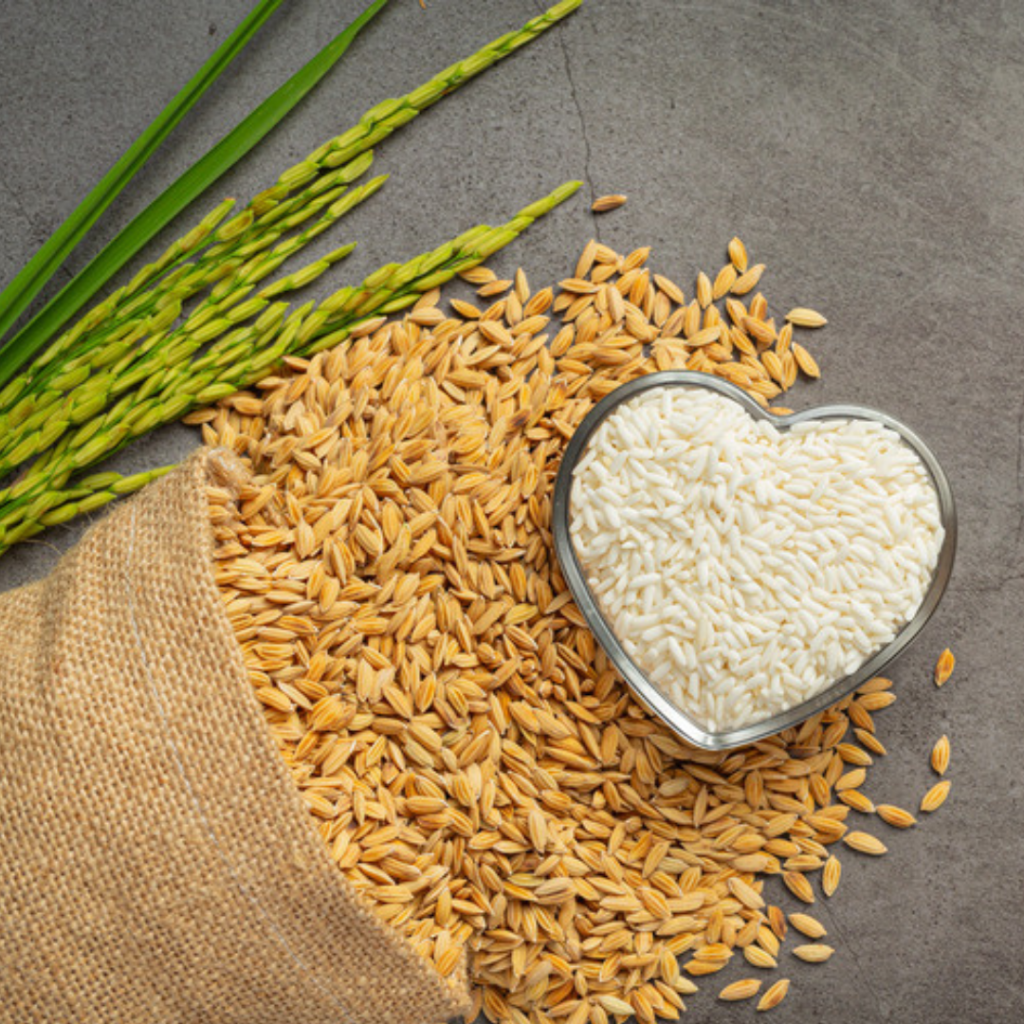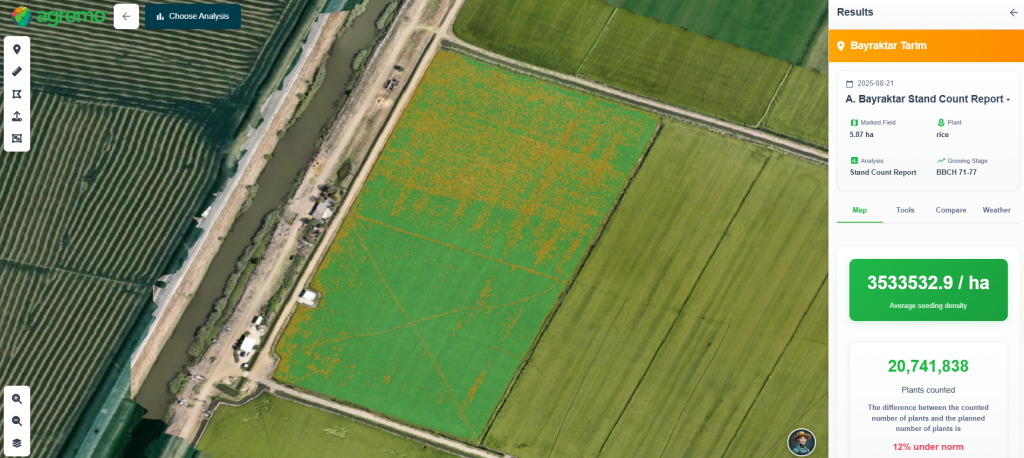Pre-harvest rice yield estimation has become a vital component of modern precision agriculture. Using advanced AI-powered analytics, farmers can now generate highly accurate yield predictions. This capability enables better planning of harvest logistics, optimized input management, and informed decision-making regarding market demands. AI-driven forecasts assist farmers in adjusting fertilizer, pesticide, and irrigation strategies. Such insights also enhance financial planning and risk management, enabling farmers and policymakers to make better decisions.
In collaboration with our clients TDT Tarimsal Drone Teknolojileri and Daze Tarim, we applied advanced Agremo AI analyses to a rice field project, achieving an impressive prediction accuracy of 97%. The actual harvested yield deviated by only 3% from the AI estimate, demonstrating the reliability and efficiency of AI-driven yield estimation in real-world conditions.

Rice Field Overview and Project Setup
- Crop: Rice 🌱
- Field size: 5.87 ha 🗺️
- Growth stage: BBCH 71-77 🌾
- Mapping drone: DJI Dock 2 – Matrice 3D 🚁
- Image Processing: Agremo Platform
- Analysis:Stand Count analysis + Biomass Tool📊
Mapping and Data Collection Using DJI Drones
High-Resolution Field Mapping Process
Using the DJI Dock 2 – Matrice 3D drone, our client efficiently mapped the 5.87 ha rice field, capturing high-resolution RGB imagery. DJI designed this advanced drone for precision agriculture, allowing it to deliver stable flight, high-quality imaging, and fast coverage of large areas.
Flight Parameters for the Rice Mapping Mission
- Altitude: 100 m
- Speed: 15 m/s
- Resolution: 2.69 cm/pixel
- Duration: 4 min 26 s
Data Stitching and AI Stand Count Analysis in Agremo
All captured images were quickly processed in the Agremo platform, producing a high-resolution RGB orthomosaic of the rice field with precise stitching, ready for further AI analysis. Following this, the AI Stand Count analysis was applied, a unique solution capable of counting plants in all growth stages and even in very dense crop areas. The results of the analysis were delivered within 24 hours, providing farmers with an accurate count of plants in the field.

AI Stand Count and Sampling Methodology
Based on the AI Stand Count analysis, which identified multiple clusters, sampling locations were carefully selected to represent the variability across the field. Samples were taken from four different locations, each corresponding to distinct clusters. The team manually stripped and weighed the grains from the plant heads. By measuring the grain weight per plant from the samples, they obtained precise data for calculating the field’s total yield.

Using the Biomass Calculator for Yield Estimation
The Biomass calculator was used to estimate the total yield, combining data from multiple sources. The number of plants obtained through the AI Stand Count analysis was automatically integrated into the calculator. Additionally, the farmer entered the average grain weight per plant, measured during sampling (2.7–2.8 g). Using these inputs, the calculator provided an accurate estimation of the field’s total yield. This allowed the farmer to compare the results with the actual harvest and plan more effectively.

Impressive Outcomes – Achieving 97% Accuracy in Rice Yield Estimation
Using Agremo’s AI Stand Count analysis, we estimated the yield at 58 tons. The actual harvested yield of 56 tons showed only a 3% deviation, clearly demonstrating the high precision of the analysis. The farmer approved the results, confirming the reliability of AI rice yield estimation for informed pre-harvest decision-making.
Benefits of AI-Powered Rice Yield Estimation
- Plan Harvests with Precision: Schedule harvest activities, optimize labor, and coordinate machinery efficiently.
- Make Smarter Financial Decisions: Accurate yield forecasts support budgeting, pricing, and marketing strategies.
- Reduce Risks: Avoid over- or underestimating production, ensuring reliable storage, transport, and sales planning.
- Optimize Resources: Utilize fertilizers, irrigation, and crop protection products more effectively, thereby reducing costs.
- Boost Operational Efficiency: Identify low-density or stressed areas for targeted interventions in the field.
- Support Strategic Planning: By applying data-driven insights, farmers and managers enhance strategic planning. They optimize short-term operations. They make informed choices that strengthen long-term business planning.
- Trust in AI Technology: Agremo’s Stand Count analysis delivers accurate, reliable results, even in dense or variable crop conditions.
Client Feedback and Real-World Impact
“Thanks to Agremo’s AI-powered analysis, we were able to predict our rice yield before harvest accurately. The 3% deviation from the actual yield gave us confidence in our planning. This allowed us to optimize storage, transport, and resource allocation. This tool has truly transformed the way we manage our fields, making our operations more efficient and data-driven.”
— Burçak S, Daze Tarim – Agriculture Engineer & UAV Pilot

